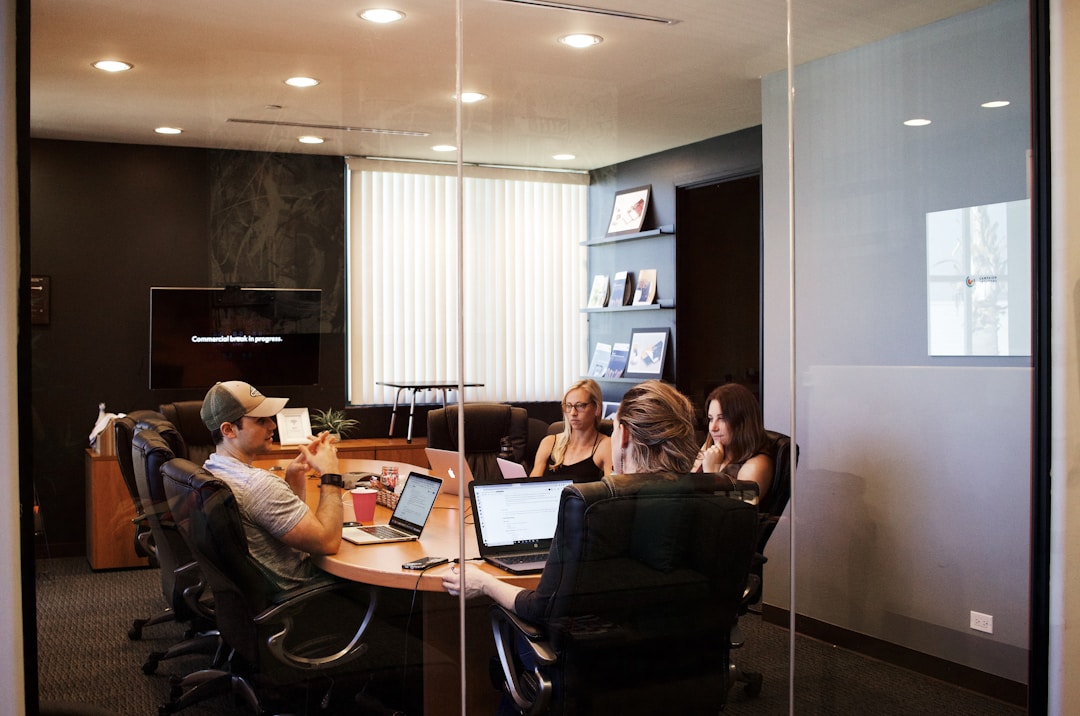Enhancing Urban Well-Being Through Biophilic Design
Urban living often disconnects us from nature, leading to stress and reduced well-being. Biophilic design offers a solution by integrating natural elements into urban spaces. This article explores how biophilic design principles can enhance city life, focusing on the use of plants, light, and natural materials in urban environments. You’ll learn practical ways to incorporate nature into your living and working spaces, improving your health and happiness in the process. By understanding biophilic design, you can transform your urban experience and reconnect with the natural world.
Understanding Biophilic Design and Urban Well-Being
Biophilic design in urban settings integrates nature into city life, enhancing well-being through thoughtful interior design. This approach leverages elements like water and daylight to improve health and attention. You’ll discover how biophilic principles transform urban environments, creating spaces that connect you with nature and promote overall wellness in the heart of the city.
Defining Biophilic Design in Urban Settings
Biophilic design in urban settings integrates natural elements into built environments, promoting sustainability and enhancing mental health. You’ll find this approach incorporates features like living walls, water features, and natural light to create a connection between city dwellers and nature, even in the heart of bustling urban landscapes.
By prioritizing biophilic design principles, you’re embracing an ecosystem-centric approach to urban development. This strategy not only improves the aesthetic appeal of cityscapes but also fosters a sense of well-being among residents, creating spaces that mimic natural environments and support overall health in densely populated areas.
The Relationship Between Nature and City Life
Urban design increasingly recognizes the vital relationship between nature and city life. By integrating green spaces, rooftop gardens, and environmentally friendly features into cityscapes, you can experience reduced heat island effects and improved air quality. These natural elements not only enhance the aesthetic appeal of urban environments but also contribute to your overall well-being and productivity.
The incorporation of biophilic design principles in urban settings helps bridge the gap between built structures and natural environments. You’ll find that access to nature within Test cities, whether through parks, green corridors, or indoor plants, can significantly reduce stress levels and improve cognitive function. This harmonious balance between nature and urban life fosters a more sustainable and livable city environment for you and your community.
How Biophilic Design Enhances Urban Environments
Biophilic design enhances urban environments by integrating natural elements into the built environment, reducing stress and improving your overall experience. You’ll find green walls, rooftop gardens, and water features incorporated into buildings and public spaces, creating a more harmonious and healthier cityscape.
These design elements not only beautify urban areas but also provide tangible benefits to your well-being. By incorporating natural light, ventilation, and vegetation, biophilic design helps purify air, regulate temperature, and create spaces that stimulate your senses, ultimately fostering a stronger connection between you and nature within the urban context.
The Challenges of Urban Living Without Nature
Urban living without nature presents significant challenges to your well-being. Research shows that disconnection from natural environments can impact your mental health, exposing you to environmental stressors in city landscapes. This section explores how urbanization affects your physiology and aesthetics, potentially contributing to major depressive disorder and other health issues.
The Impact of Urbanization on Mental Health
Urbanization often leads to increased air pollution and reduced biodiversity, directly impacting your mental health. As you navigate city life, exposure to these environmental stressors can contribute to anxiety, depression, and other psychological issues. The lack of natural elements in urban settings disrupts your innate connection to nature, potentially affecting your overall well-being.
Research in environmental psychology suggests that limited access to green spaces in urban areas can negatively influence your cognitive function and emotional regulation. You may experience higher stress levels and decreased ability to focus when surrounded by concrete landscapes devoid of natural elements. Incorporating biophilic design principles in urban planning can help mitigate these effects, promoting better mental health outcomes for city dwellers.
Environmental Stressors in City Landscapes
In urban environments, you face numerous environmental stressors that can impact your quality of life and cognition. Constant exposure to noise pollution, artificial lighting, and limited green spaces can strain your mental resources, potentially leading to increased stress levels and reduced cognitive function.
The lack of natural elements like wood in city landscapes can contribute to a sense of disconnection from nature, affecting your overall well-being. This environmental deficit may increase your susceptibility to various diseases and hinder the development of strong community bonds, further compromising your urban living experience.
The Consequences of Disconnecting From Nature
Disconnecting from nature in urban environments can significantly impact your creativity and overall well-being. Studies show that prolonged separation from natural elements may reduce your ability to generate innovative ideas, potentially affecting your performance in advertising and other creative fields. This disconnect can also lead to increased stress levels, making you less patient in daily interactions.
Lack of exposure to green spaces, such as rooftop gardens or vegetable patches, can negatively affect your physical health. Without regular contact with nature, you may experience higher rates of respiratory issues and reduced immune function. Implementing biophilic design elements, like green roofs, in urban settings can help mitigate these effects and improve your overall quality of life.
Core Principles of Biophilic Design in Cities
Discover how biophilic design principles enhance urban well-being by integrating natural elements into architecture, creating green public spaces, promoting biodiversity, and utilizing natural light and ventilation. These strategies incorporate elements like bamboo and forest-inspired furniture to encourage physical activity and improve urban ecology. You’ll learn how these principles transform cityscapes, fostering healthier, more sustainable urban environments.
Integrating Natural Elements Into Architecture
You can integrate natural elements into architecture through thoughtful urban planning and sustainable design. By incorporating colors found in nature, such as soothing greens and blues, you create spaces that promote relaxation and improve sleep quality. This approach enhances the visual appeal of buildings while contributing to overall well-being.
Educational institutions can benefit from biophilic design principles by incorporating natural materials and textures into their structures. You’ll find that exposure to these elements can enhance cognitive function and creativity, supporting better learning outcomes. By prioritizing natural light and ventilation in architectural designs, you create healthier indoor environments that positively impact both physical and mental health.
Creating Green Public Spaces for Communities
Creating green public spaces in urban areas helps combat the urban heat island effect, improving your local environment. By incorporating trees and vegetation, you provide shade and natural cooling, reducing energy consumption for air conditioning. These spaces offer valuable information about local ecosystems and promote environmental science education.
You benefit from increased access to nature through thoughtfully designed parks and community gardens. These green areas serve as social hubs, encouraging physical activity and fostering community connections. By prioritizing green public spaces, you contribute to a more sustainable urban environment that enhances your overall well-being and quality of life.
Promoting Biodiversity Within Urban Areas
Promoting biodiversity in urban areas aligns with the philosophy of biophilic design, addressing environmental issues while reducing anxiety. You can support diverse ecosystems by incorporating native plants, creating wildlife corridors, and designing green roofs that attract various species. These elements not only enhance urban ecology but also provide natural solutions for stormwater management.
Technology plays a crucial role in monitoring and maintaining urban biodiversity. You can use smart sensors and data analytics to track species populations, air quality, and water conservation efforts. By integrating these tools into urban planning, you create more resilient cities that balance human needs with environmental preservation, fostering a deeper connection between urban dwellers and nature.
Utilizing Natural Light and Ventilation
Architects prioritize natural light and ventilation in biophilic design to enhance your urban living experience. By incorporating large windows, skylights, and open floor plans, you benefit from increased exposure to daylight, which improves your mood and regulates your circadian rhythm. These design elements also promote better indoor air quality, reducing the need for artificial lighting and air conditioning.
Integrating natural ventilation systems into urban architecture supports your health and encourages physical activity. Cross-ventilation techniques and operable windows allow you to control airflow, creating a more comfortable environment for exercise and daily tasks. This approach not only conserves energy but also connects you with the natural world, fostering a culture of sustainability within urban spaces.
Benefits of Biophilic Design for City Dwellers
Biophilic design offers significant benefits for urban dwellers, improving mental health and physical well-being through thoughtfully constructed spaces. You’ll discover how these designs enhance community connections and boost economic value. From reducing mental disorders to incorporating art and innovative floor plans, biophilic elements provide practical solutions for sustainable urban living, increasing your knowledge of effective city design.
Improving Mental Health and Well-Being
Biophilic design in urban environments significantly improves your mental health and well-being through sustainable development practices. By incorporating natural resources into cityscapes, you experience enhanced mood and reduced stress levels. Systematic reviews have shown that exposure to green spaces and natural elements in urban settings positively impacts your psychological state.
Your learning abilities and cognitive function can also benefit from biophilic design principles. Natural environments in cities stimulate your mind, improving concentration and creativity. These designs provide opportunities for relaxation and reflection, supporting your overall mental wellness and contributing to a more balanced urban lifestyle.
Enhancing Physical Health Through Active Spaces
Biophilic design enhances your physical health by creating active spaces that encourage movement and exercise. Green building innovations incorporate nature-inspired elements into urban infrastructure, stimulating your brain and promoting physical activity. These designs often include features like green roofs, urban gardens, and accessible parks that invite you to engage in outdoor activities.
By integrating active spaces into urban planning policies, cities can address public health concerns while promoting environmental sustainability. You benefit from improved air quality, reduced stress levels, and increased opportunities for physical exercise. These biophilic elements in urban design contribute to a healthier lifestyle, supporting your overall well-being in densely populated areas.
Strengthening Community Connections
Biophilic design serves as a powerful tool in urbanism, strengthening community connections through strategically built environments. You’ll find that incorporating natural elements into public spaces reduces pollution and creates inviting areas for social interaction, fostering a sense of belonging and shared responsibility among residents.
By implementing biophilic design strategies, you contribute to the development of vibrant urban communities. These nature-inspired spaces encourage outdoor activities and social gatherings, promoting a healthier lifestyle while addressing environmental challenges in densely populated areas. You’ll experience improved social cohesion and a stronger sense of place within your urban neighborhood.
Boosting Economic Value and Sustainability
Biophilic design principles boost economic value by enhancing the appeal and functionality of buildings. You’ll find that incorporating natural elements, such as strategically placed windows, increases property values and attracts tenants. This approach reduces energy costs and improves employee productivity, resulting in significant financial benefits for building owners and businesses.
Implementing biophilic design in urban development promotes sustainability by reducing environmental impact. As you explore each chapter of a biophilic building project, you’ll discover how these principles contribute to resource conservation and waste reduction. By integrating nature into urban spaces, you create more resilient and eco-friendly environments that support long-term economic growth and community well-being.
Practical Applications of Biophilic Design
Explore practical applications of biophilic design in urban environments. You’ll learn about incorporating green roofs and vertical gardens, designing parks and urban forests, revitalizing buildings with natural materials, and implementing water features in public areas. These strategies enhance beauty, support stress management, and influence behavior through environmental design, creating a more peaceful urban atmosphere.
Incorporating Green Roofs and Vertical Gardens
Incorporating green roofs and vertical gardens in urban spaces provides habitats for animals and enhances biodiversity. You’ll find these installations support local ecosystems, offering shelter and food sources for birds and insects. By implementing these green features, you contribute to improved air quality and natural temperature regulation in cities.
Green roofs and vertical gardens play a crucial role in rainwater management, reducing urban runoff and easing the burden on city drainage systems. These living structures also help regulate your circadian rhythm by providing natural light cues and green views, which can improve your sleep patterns and overall well-being in urban environments.
Designing Parks and Urban Forests
Designing parks and urban forests as green infrastructure reduces environmental risks while creating urban oases. You’ll find these spaces provide essential ecosystem services, such as improving air quality and mitigating urban heat island effects. By incorporating diverse plant species and natural landscapes, you create adaptable environments that support local biodiversity and enhance urban resilience.
Urban forests and parks play a crucial role in regulating your emotions and promoting mental well-being. These green spaces offer opportunities for stress relief and social interaction, fostering a sense of community. As you design these areas, consider incorporating walking paths, seating areas, and open spaces to encourage physical activity and social engagement, supporting overall urban health and adaptation to city life.
Revitalizing Buildings With Natural Materials
Revitalizing buildings with natural materials creates spaces that promote social connection and serve as sanctuaries for meditation. By incorporating elements like wood, stone, and plant-based textiles, you transform urban structures into biophilic environments that foster well-being. These materials provide a sensory-rich experience, connecting you to nature and enhancing your overall health.
Utilizing natural materials in building revitalization maximizes the use of sunlight and improves resource efficiency. You’ll find that these materials often have better thermal properties, reducing energy consumption while creating a more comfortable indoor environment. By prioritizing natural elements, you create spaces that support your physical and mental health, making urban living more sustainable and enjoyable.
Implementing Water Features in Public Areas
Implementing water features in public areas enhances urban well-being by creating a connection to nature and improving microclimates. You’ll find that features like rain gardens and fountains help manage stormwater runoff, mitigating climate-related challenges in cities. These elements not only serve practical purposes but also contribute to your happiness by providing peaceful spaces for relaxation and contemplation.
Water features support urban biodiversity by attracting various organisms and creating habitats within city environments. As you interact with these spaces, you experience a sense of connection to the natural world, even in densely populated areas. By incorporating water elements into public spaces, urban planners create a more balanced and sustainable reality for city dwellers, promoting overall well-being and environmental awareness.
Case Studies of Biophilic Urban Projects
Explore successful biophilic urban projects worldwide, examining how cities integrate urban forests to enhance well-being. You’ll discover evidence-based lessons from global initiatives and learn how to adapt these ideas to your local context. These case studies highlight the historical development of biophilic design and its impact on carbon reduction in urban environments.
Examining Successful Green Cities Worldwide
Examining successful green cities worldwide reveals innovative approaches to biophilic design. You’ll find cities like Singapore incorporating vertical gardens on building walls, creating a harmonious blend of architecture and nature. These urban centers utilize analytics to monitor and optimize their green infrastructure, ensuring maximum environmental benefits and resource efficiency.
Virtual reality technology allows you to explore and experience these green cities’ biophilic elements before implementation. By studying the geometry of successful urban forests and green spaces, you gain insights into effective design principles. Many of these cities provide open access to their sustainability data, enabling you to learn from their experiences and adapt similar strategies to your local context.
Lessons Learned From Urban Biophilic Initiatives
Urban biophilic initiatives have taught you the importance of integrating natural systems into city planning. You’ll find that cities like Singapore successfully incorporate relaxation spaces featuring native plants such as oak trees, enhancing property values while promoting well-being. These projects demonstrate how biophilic design can create a harmonious balance between urban development and nature.
You’ve learned that successful biophilic initiatives require a holistic approach, considering both environmental and social factors. By studying these projects, you understand the need for adaptable designs that can withstand changing urban conditions while providing consistent benefits to residents. These lessons emphasize the importance of long-term planning and maintenance to ensure the sustained success of biophilic elements in urban environments.
Adapting Global Ideas to Local Contexts
When adapting global biophilic ideas to local contexts, consider how climate change impacts your region’s unique environmental challenges. You can incorporate elements like glass structures that showcase local flora while protecting against harsh weather conditions. This approach allows you to create a visual connection with nature while addressing specific climate-related issues in your area.
Integrating features inspired by human nature, such as artificial waterfalls or nature-inspired artwork, can help you capture the essence of biophilic design in urban settings. By tailoring these elements to reflect local culture and aesthetics, you create spaces that resonate with your community while promoting overall well-being. This localized approach ensures that biophilic design principles are effectively implemented in your specific urban environment.
Strategies for Advancing Biophilic Design in Urban Planning
Discover strategies to advance biophilic design in urban planning. You’ll explore steps for architects and developers, policy recommendations for authorities, community involvement, and overcoming implementation barriers. Learn how to integrate natural elements like streams and fractals to reduce noise and enhance urban well-being through practical biophilic solutions.
Steps for Architects and Developers to Get Started
To begin implementing biophilic design principles, you should familiarize yourself with environmental protection regulations and relevant literature. Research successful projects in cities like Melbourne to understand how complexity in design can enhance urban spaces. By studying these examples, you’ll gain insights into the essence of biophilic architecture and its impact on urban well-being.
Start by incorporating natural elements into your designs, considering local ecosystems and climate conditions. Collaborate with environmental experts to ensure your projects align with sustainability goals. As you develop your plans, focus on creating spaces that promote biodiversity and connect residents with nature, enhancing the overall quality of urban life.
Policy Recommendations for Urban Authorities
You should advocate for policies that integrate biophilic design principles into urban engineering practices. By incorporating nature-inspired elements into building codes and zoning regulations, you create a framework for sustainable development that aligns with the UN’s Sustainable Development Goals. This approach ensures that new urban spaces are designed in harmony with natural systems, promoting well-being and environmental sustainability.
As an urban authority, consult with biophilic design experts to develop guidelines for creating rooms and public spaces that foster connection with nature. Implement policies that incentivize developers to include green spaces, natural light, and ventilation in their projects. By prioritizing these elements, you create urban environments that support both human health and ecological balance, setting a foundation for more resilient and livable cities.
Involving Communities in the Design Process
Involving communities in the biophilic design process enhances sustainable living practices and fosters a deeper understanding of local needs. You can organize workshops and surveys to gather data on residents’ preferences for natural elements in urban spaces, such as yoga areas in parks or nature-inspired bedroom designs. This collaborative approach ensures that biophilic projects align with community values and promote well-being.
By engaging local residents, you create opportunities for them to contribute their knowledge of the area’s ecology and cultural significance. You can establish community gardens or green spaces that reflect the neighborhood’s character, promoting a sense of ownership and connection to nature. This participatory process not only improves the design outcome but also educates the community about the benefits of biophilic elements in urban environments.
Overcoming Barriers to Implementing Biophilic Solutions
To overcome barriers in implementing biophilic solutions, you need to address concerns about integrating wildlife into urban spaces. By demonstrating how carefully designed green canopies and ponds can coexist with city infrastructure, you can alleviate fears about potential conflicts. Educate stakeholders on how these natural elements enhance urban lifestyles while supporting local ecosystems.
Financial constraints often hinder biophilic projects, but you can explore innovative funding models to make implementation feasible. Consider incorporating revenue-generating features, such as rooftop gardens or nature-inspired bathrooms in public spaces, to offset costs. By highlighting the long-term economic benefits of biophilic design, including increased property values and reduced energy consumption, you can build a stronger case for investment.
Frequently Asked Questions
What is biophilic design and how does it improve urban well-being?
Biophilic design incorporates natural elements into urban spaces, enhancing human well-being. By integrating greenery, natural light, and organic materials, it reduces stress, improves air quality, and boosts productivity. This approach reconnects city dwellers with nature, promoting physical and mental health in urban environments.
How can biophilic design address the challenges of living in cities?
Biophilic design integrates nature into urban environments, addressing city-dwelling challenges by reducing stress, improving air quality, and enhancing well-being. Through green spaces, natural materials, and nature-inspired elements, it creates healthier, more livable urban spaces that reconnect people with the natural world.
What are the key principles of implementing biophilic design in urban areas?
Biophilic design in urban areas incorporates nature into built environments, focusing on natural light, vegetation, water features, and natural materials. Key principles include creating green spaces, maximizing daylight, using organic forms, and integrating local ecosystems to enhance well-being and environmental sustainability.
What benefits do city dwellers experience from biophilic design elements?
Biophilic design elements offer city dwellers improved mental health, reduced stress, enhanced productivity, and better air quality. These nature-inspired features, such as green walls and natural lighting, create a connection to the outdoors, fostering a sense of well-being and environmental awareness in urban environments.
Can you provide examples of successful biophilic urban projects?
Successful biophilic urban projects include Singapore‘s Gardens by the Bay, New York’s High Line, and Milan’s Bosco Verticale. These developments integrate nature into urban environments, enhancing biodiversity, air quality, and residents’ well-being while creating sustainable, aesthetically pleasing spaces within cities.
New Document 8713
常见抵押贷款欺诈警告信号:提前识别与防范
了解抵押贷款欺诈的常见类型与特征
识别虚假收入和资产证明的手法
警惕夸大房产价值的评估报告
警惕抵押贷款过程中的异常信号
注意过于优厚的贷款条件和承诺
小心未经请求的贷款报价和联系
核实贷款机构和经纪人的资质
检查执照和注册信息以确认合法性
通过官方渠道验证从业人员身份
保护自己免受抵押贷款欺诈的方法
仔细阅读并理解所有贷款文件
寻求独立法律和财务专业人士的建议
遭遇抵押贷款欺诈时的应对步骤
向相关监管机构报告欺诈行为
保留证据并寻求法律援助
提高对抵押贷款欺诈的防范意识
参与防欺诈教育和宣传活动
持续关注最新的欺诈手段和预警信息
Tips for Decorating Your Home on a Budget
Decorating your home doesn’t have to break the bank. With a little insight and a touch of creativity, you can create a beautifully adorned space without ever having to feel guilty about overspending. In this article, we’ll guide you through some essential tips for home decoration that won’t empty your wallet. Keep reading to discover how.
Understanding Home Decor on a Budget

When you’re working with a tight budget, understanding what you need as against what you want is the key. Identify your home decor requirements strictly and look for ways to meet them economically.
Also, consider the longevity of the items you’re buying. For instance, fake indoor trees would make for a better investment than buying a real tree if you don’t have a green thumb. Though some items may cost a little more upfront, they might be more cost-effective in the long run as they don’t need to be replaced often. Always go for durability over aesthetics when on a budget.
An excellent tip for saving cash is to start small. You don’t need to decorate your entire home in one go. Start with one room and complete it before moving to the next.
Furthermore, remember that the quality of your home decor isn’t determined by the amount of money invested, but by the amount of love and creativity that went into it. Splurging money on fancy accessories does not necessarily translate into having a beautifully decorated home.
Canvassing Costs: Buying Affordable Home Decor Elements
Shopping for affordable decor requires patience and a keen eye for discounts. Always compare prices in different stores before settling on an item.
Second-hand markets and garage sales can also be a goldmine for unique and affordable home decor items. You could find rare pieces at unbelievable prices. There’s also the internet; online platforms often have vast collections of home accessories.
Remember, though, quality and affordability should go hand in hand. Do not compromise on the quality of your items in the name of affordability. A durable piece, although slightly pricier, saves more money in the long run than a cheap, fragile item.
DIY Decor: An Affordable Solution to Home Styling
An affordable way to decorate your home is by creating your own decor. DIY decor is not only cost-effective but also adds a personal touch to your home.
You can repurpose old home items into beautiful decor pieces. An old wine bottle, for example, can be repurposed into a flower vase or a lantern holder.
Abstract paintings can also enhance the look of your space. You can learn basic art through online tutorials and create a masterpiece for your home.
Other DIY decor options include creating wall hangings, candle holders, and even designing your own pillow. The possibilities are endless.
Efficient Use of Space and Minimalistic Decor Approach

A minimalistic approach to home decor is not just trendy—it is also quite cost-effective. With a minimalist style, the idea is to use less to achieve more.
Consider a less-is-more approach to your house accessories and avoid stuffing your space with items that provide no functionality.
Furniture, for example, eats up a lot of space in the home. Use your furniture efficiently to avoid unnecessarily filling up your living space.
The color schemes in your home also contribute significantly to the overall decor. Using monochrome or shades of a single color can give your home an artistic and elegant look without any extra cost.
Seasonal Updates and Affordability in Home Decor Choices
Changing your home decor to match the season yet staying on a budget is achievable. During each season, pick your upgrades wisely and avoid unnecessary spending.
For instance, during the festive season, use DIY ornaments and recycle last year’s decorations. When the spring season comes, replace heavy throws with light, airy curtains.
You can also play around with the placement of your furniture and decor pieces during different seasons. A change in arrangement can give your space a completely new look with no added cost.
Finally, remember to budget for your seasonal decor needs ahead of time. This way, you can avoid impulsive and unnecessary spending.
Overall, carefully planning and creatively executing your decor ideas can help you achieve a beautiful home on a budget. Remember, home decor is a gradual process, and patience will pay off in the end.
Navigating the Legal Maze: How Attorneys Provide Essential Guidance
Every individual, at some point in their lives, will invariably encounter legal situations that necessitate professional intervention. Whether it’s a minor civil dispute or a serious criminal offense, comprehending and successfully traversing the vast labyrinth of legal legislation can be a daunting endeavor. Legal conundrums, marked by their complexity and severity, demand the expertise of proficient attorneys to ensure that justice is served aptly. In this article, we opine on the crucial nature of legal representation and why attorneys serve as indispensable aids while we navigate the legal maze.
The Role of an Attorney in the Legal System

An attorney, also referred to as a lawyer, is a licensed professional who advises individuals, businesses, and government agencies on legal matters and disputes. They represent their clients in court, negotiate on their behalf, and prepare legal documents like wills, deeds, contracts, and lawsuits. While fulfilling their responsibilities, attorneys must adhere firmly to a strict code of ethics while working relentlessly to protect their client’s interests.
Lawyers are typically specialized in specific areas of law, such as criminal law, civil law, family law, bankruptcy law, and personal injury law, amongst many others. For instance, a criminal defense attorney Las Vegas, possesses considerable expertise and experience in handling cases related to criminal offenses, ensuring that their client’s rights are robustly protected under the law.
The need for an attorney might not be apparent until one is ensnared in a complex legal obstacle where professional guidance becomes paramount. Be it a confrontational divorce, an intricate business contract, or a tough criminal defense, an experienced attorney can provide valuable advice and representation that would otherwise be challenging to obtain.
The Power of Knowledge and Experience
The legal system in Las Vegas and other cities can be overwhelmingly intricate to someone that is not well-versed in its nuances. Therefore, having an experienced attorney at one’s side doing the legwork and deciphering complex legal jargon can make a world of difference. They have comprehensive knowledge of how the system works and are familiar with the legal procedures, court customs, and tactics used by the opposition. This knowledge and experience equip them to devise effective strategies; thereby improving the outcome for their clients.
Additionally, experienced attorneys also have vast networks in the legal world, which can aid in procuring necessary documentation or expert testimonials. They also hold the power to negotiate better deals or settlements with the opposition, making the most out of a potentially adverse situation.
Moreover, in the dire circumstance of a criminal offense, an attorney familiar with the realm of criminal law, evaluates the case critically, anticipates potential issues, and suggests the best course of action. Thus, the knowledge and experience of an attorney can significantly tilt the scales in favor of their client.
The Value of Impartial Advice

Legal matters often have far-reaching implications that are emotional, financial, and personal in nature. In such scenarios, an attorney serves as an unbiased, third-party viewpoint that can provide crucial advice detached from emotional predicates.
A competent attorney deciphers the complex legal problem at hand and sheds light on the potential outcomes, allowing the client to make informed decisions. In addition, they navigate the client through the legal process, ensuring they understand each phase, as well as their rights and obligations throughout.
This objective advice becomes particularly invaluable during difficult times, such as during the dissolution of a marriage or while facing severe criminal charges. By employing logic over emotions, attorneys ensure that their clients respond to these challenges in a manner best suited to their interests.
Easing the Burden of Legal Proceedings
Legal proceedings can be draining and time-consuming for the uninitiated. There are stacks of paperwork to be processed, incessant filing, and meeting deadlines. There’s also the risk of losing the case due to a minor procedural error or misunderstanding of the law. An attorney steps to lift this burden from the client’s shoulders by undertaking the daunting task of preparing and filing the necessary documents. Attorneys have the training and experience to deal with legal proceedings adeptly and efficiently. They are well-versed in submission protocols and courtroom decorum, and they have a sound understanding of legal precedents.
Whether it involves arguing the case before a judge, cross-examining witnesses, or negotiating settlements, having an attorney by one’s side can significantly reduce the stress typically associated with legal matters and allow individuals to focus on other aspects of their lives.
Moreover, legal matters often demand plenty of time and attention, diverting focus from other important aspects of life. However, with a trusted attorney at your side, you can devote more time to relationships, work, and hobbies that bring joy and fulfillment. By shouldering the burden of legal procedures, your attorney allows you to maintain balance, empowering you to pursue your passions and live the life you desire.
Protection of Rights and Interests
The primary role of an attorney is to protect their client’s rights under the law. Individuals without legal expertise might not be fully aware of their rights and could inadvertently forfeit them during legal proceedings.
Lawsuits, regardless of their nature, can severely affect a person’s life. An attorney strives to safeguard their client’s rights and ensures that proceedings are conducted justly and lawfully. They advocate for the client’s best interests and work diligently to achieve the most favorable outcome possible.
Moreover, in criminal cases, attorneys play a crucial role in ensuring that one’s constitutional rights are not violated. They scrutinize the case for any procedural irregularities that might influence the outcome adversely against their client. Thus, having a proficient attorney is critical for the rigorous defense of one’s rights and interests.
Legal Advice for Businesses
In the corporate world, legal blunders can bear substantial consequences, affecting credibility and causing significant financial loss. Legal advice from knowledgeable attorneys helps businesses operate within the limits of the law, minimizing the risk of litigation.
Attorneys guide businesses through various stages, right from inception to routine operations, helping them understand the implications of laws relevant to their industry. This might relate to labor law, tax law, real estate law, intellectual property rights, and much more.
Seeking legal advice is particularly important while signing intricate contracts or making major business decisions. An attorney can review contracts to ensure they are legally sound, decipher the legal terminology, and provide explicit interpretations, thereby preventing potential disputes down the line.
Engaging the services of a skilled attorney transcends the mere act of fulfilling a legal obligation. It becomes a proactive measure. These legal professionals, with their profound expertise and unwavering dedication, safeguard individuals and businesses alike from the perils of legal entanglements. Therefore, in the exhilarating world of contracts and momentous business decisions, the presence of an attorney becomes an indispensable beacon of wisdom and security, promising a journey free from the stormy sea of legal disputes.
The Indispensable Role of an Attorney

With the legal terrain being as challenging and confusing as it is, navigating it alone can be a perilous journey filled with uncertainties. An attorney guides individuals through this maze, providing necessary advice, representing them in legal proceedings, and vigilantly protecting their rights and interests. They eliminate the stress associated with paperwork, ensure compliance with legal procedures, and wield their expertise and experience to favor their clients.
Moreover, in business settings, they help corporations operate within the confines of the law, mitigate risks, and prevent costly legal controversies. Whether one is embroiled in a civil case, fighting criminal charges, or seeking advice on corporate legality, attorneys serve as an essential pillar of support, underpinning the justice system.
A Guide To Living on the Road Full-Time
Unfolding the joys and adventures of full-time road life often comes with duties and tasks you will need to take care of. Right from planning and packing your travel vehicle, and hitting the roads to setting up a home in your recreational vehicle (RV), the whole process demands meticulous thought-out strategies, efficient budgeting, and effective living solutions. This article delves as your comprehensive guide into the fascinating world of full-time road living, describing practical insights that make your life on wheels an exciting yet secure journey.
Understanding the Nomadic Lifestyle

Living on the road full-time is not merely about non-stop traveling but cherishing the spirit of adventure and freedom. At the heart of this concept lies the idea of being nomadic, drifting through various places, new cultures, and landscapes, while experiencing a self-sustainable lifestyle. As a beginner, it might seem like a daunting project, but the key is in the preparation.
If you’ve decided to spend your life on wheels, your primary home would be an RV. Understanding the RV extended warranty cost, the overall investment in an RV, its maintenance, or handling unexpected issues on the roadway are some of the aspects you need to address. An extended warranty acts as a shield against unexpected and costly repairs. Just like any other vehicle, an RV is prone to mechanical breakdowns, electrical issues, and other unforeseen problems. Without an extended warranty, you may find yourself facing hefty repair bills that can quickly put a dent in your travel budget.
Before embarking on this journey, understand your reasons for choosing this lifestyle. Whether it’s your love for traveling, an escape from the city’s daily hustle, or a quest for freedom and simplicity, your motivations will drive your experience. It’s a lifestyle choice that requires distressing, grounding, patience, and immense adaptability to new environments, weather conditions, and cultures.
Choosing the Right Vehicle
Choosing the right vehicle is another crucial step toward the full-time road-living dream. Your vehicle is not just a mode of transportation. It’s your home, and it needs to be comfortable, reliable, affordable, and capable of withstanding long journeys. Different types of RVs like class A, B, and C motorhomes, or travel trailers are available in the market, and choosing one depends on your needs, budget, and lifestyle. Take time, do diligent research, visit some RV shows, or rent out different RV models before making your final choice.
While selecting an RV, give consideration to the size, living space, storage capacity, fuel efficiency, and towing capabilities. Are you planning to travel alone or with family? Are you going to stay mostly in urban areas or rough terrains? Your travel and lifestyle preferences hugely influence your vehicle choice. For instance, if you’re traveling alone, a small, compact camper van could be a perfect fit, while for family trips, a motorhome with dedicated sleeping, cooking, and living space might be the right choice. You may also need to winterize the vehicle if it isn’t already.
The cost of the RV isn’t your only expense. You have to understand the maintenance, repair, and potential breakdown costs associated with owning an RV. For this, consider getting an extended RV warranty, which can cover substantial repair costs and offer peace of mind during your travels.
Maintaining Your RV

Mastering RV maintenance is one of the key aspects of full-time road living. It can save you from inconvenient breakdowns and hefty repair costs. While an RV warranty covers certain repairs, periodic maintenance of your vehicle’s engine, brakes, tires, batteries, and exterior can help avoid unnecessary hassles on the road. Regularly check your vehicle’s oil, coolant, and brake fluid levels. Ensure the tire pressure is right, and they’re in good condition.
Keep your batteries charged and clean. In addition, maintain the interior of the RV. Regular cleaning helps prevent pests and keeps your living space tidy. It’s advisable to have a detailed maintenance checklist and follow it rigorously. Repairing small stuff by yourself can also save you some money, but do not hesitate to seek professional help for complex repairs. Prioritize your safety always. You should have a first-aid kit, fire extinguisher, and emergency tools, just in case of any unforeseen circumstances.
Planning Your Travel
Your journey will be unique. It might be a route charted across national parks, a coastline drive, or maybe a cross-country expedition. When you plan your travel, consider factors like weather conditions, local regulations, safety, and availability of campsites. Use maps and navigation tools to outline your route. Still, while sticking to the plan is important, be ready for spontaneous detours – they often lead to the best adventures!
Full-time living also means part-time traveling. Consider staying at a particular place for a couple of weeks before moving to the next. This can reduce travel fatigue and give you a chance to explore the local community and culture. Plan out attractions and activities you want to do in each place and make memories that will last a lifetime. Stay vigilant about safety. Whether you choose to stay in an RV campsite, a national park, or a boondock location, always lock your vehicle, even when you’re inside. Keep a check on your possessions and stay cautious of your surroundings, especially if you’re boondocking.
Budgeting Your Experience

Budgeting is a major aspect of your new lifestyle. It determines how far you can go and how long you can stay on the road. Make a detailed breakdown of your expenses, including food, fuel, vehicle maintenance, insurance, the cost of campsites, or boondocking areas, leisure activities, and miscellaneous expenses. It’s advisable to have savings for emergencies and unexpected costs. Weigh your expenses against your income. If you’re a digital nomad or have a source of passive income, it’s an advantage.
If you’re planning on sustaining just from your savings, you need an exhaustive budget plan that includes every big and small expense. Cut down your costs wherever possible. For instance, cooking your meals rather than eating out every day or opting for free boondocking sites instead of costly campsites can significantly save money. Remember, unexpected costs do come up, so an emergency fund is useful. Your RV may need a sudden repair, or fuel prices might go up. Ensure your budget is flexible enough to accommodate such unexpected costs. This way, you can avoid stress and enjoy your time on the way.
Staying Connected

Being on the road doesn’t mean you have to lose touch with your people. In today’s connected world, it’s pretty easy to keep in touch with your family and friends. Many mobile providers offer country-wide coverage, and Wi-Fi is available at numerous public places and campsites. Besides, the internet allows you to remain connected with a larger community of full-time road dwellers. There are numerous platforms where RVers share their experiences, exchange advice, or arrange meet-ups.
The online sphere also offers remote work opportunities that could support your nomadic lifestyle. However, do not get consumed by the digital world so much that you miss out on the real world outside your RV door. Striking a balance between real-world experiences and digital world commitments is key to enjoying your time on the road.
While living life on the road may have its challenges, such as the need for careful planning and the occasional unpredictability, the rewards are unparalleled. It offers a fantastic way to experience the world, fostering personal growth, and creating memories that will last a lifetime. So, if you’re seeking a lifestyle that combines freedom, adventure, and a deep connection with nature, living in an RV might just be the perfect choice for you. So, plan well, travel safely, and enjoy the journey!
Innovative Shrink Sleeve Solutions for Product Enhancement
Products today face fierce competition on the shelves regardless of their type or industry. Traditional labels don’t cut it anymore; when customers scan a shelf of products, your product should stand out vividly to draw their gaze. Shrink sleeve labeling has been showing great promise and delivering incredible results in improving a product’s visibility and attractiveness. It’s not just about the product inside. It’s also about how it’s presented externally. Shrink sleeve labeling bring a new dimension to product presentation and can aid immensely in catching customers’ attention. They are customizable, provide 360-degree coverage, and perfectly match any container’s contours. Keep reading to understand more about this innovative solution.
Shrink Sleeve Labeling: An Introduction
Shrink sleeve labels are a type of label made from plastic or polyester film material. They have high shrink properties and can be used to cover the whole product container without any creases or folds. This makes them ideal for unique product shapes. Their popularity has skyrocketed over the years due to their versatility and usability across many industries, including food and beverage, health and beauty, pharmaceuticals, and household products, to name a few.
In comparison to traditional labeling methods, shrink sleeves are more visually appealing. They offer more vibrant colors and a glossy or matte finish, giving the product a premium look. Furthermore, unlike traditional labels, shrink sleeves offer a larger surface area for design and can cover the entire packaging. This means more space for branding, product information, ingredients, instructions, bar codes, and other necessary materials.
With innovative technologies like CoolJarz shrink sleeves, they offer custom pre-rolled shrink sleeves that not only enhance the visual appeal of your product but also provide functional benefits like tamper-evidence and resistance to moisture and scratching. This improved durability makes shrink-sleeve labels a reliable solution for products that are exposed to harsh conditions or rough handling.
Customization and Flexibility of Shrink Sleeves

One major advantage of shrink-sleeve labels is their customization ability. Every brand is unique, and to effectively communicate its value proposition, customization is vital. Shrink sleeves offer flexibility in design, size, shape, color, texture, and material, unlike traditional labeling methods. They are an excellent canvas for brands to create eye-catching and unique designs that match their brand identity and communicate the right message to their customers.
All elements of a shrink sleeve, from the choice of material, design, and print, to the finish and shape, can be tailored to fit exactly to the brand or product needs. Moreover, their 360-degree coverage allows for the integration of complex graphics and designs that wouldn’t be possible with other types of labels. Designers can therefore let their imagination run wild and integrate as many elements as they wish to create a compelling look for the product.
Another level of flexibility shrink sleeve labels offer is in their application. Even on uniquely shaped containers where other labels would wrinkle, shrink sleeves conform perfectly to the shape, offering a smooth and sleek finish. This enhances the aesthetic appeal of the product and creates a high-quality look. Additionally, they can be applied manually or automatically, depending on the quantity and complexity, providing brands with further flexibility and efficiency in their operations.
Impact on Brand Identity and Perception
Establishing a strong brand identity can be a daunting challenge for any business, especially with the intense competition in the market. One critical component that contributes enormously towards this is product presentation. When a customer sees a product for the first time, the packaging and labeling is the first thing they notice. This can heavily influence their impression of the brand and whether they purchase the product.
Shrink sleeves have the potential to enhance a product’s appearance drastically. Their 360-degree design coverage, vivid colors, and high-quality finish make products stand out on the shelf. Subsequently, this increased visibility can aid in attracting potential customers and influencing their purchasing habits. Moreover, the space offered by shrink sleeves gives brands the opportunity not only to communicate necessary product information but also to embed their brand story, values, and personality. All these components are critical in shaping a strong brand identity and perception in the mind of consumers.
Furthermore, shrink sleeves are an embodiment of the product and the brand. They are the first point of engagement between the brand and consumers. Therefore, to create a positive and lasting impression, it’s crucial that the sleeve design reflects the brand image and resonates with the target audience. Brands can use the design elements to their advantage to evoke specific feelings or portray certain traits. For example, bright colors can convey fun and vibrancy, while clean, minimalistic designs offer a sophisticated, high-end feel.
Beyond Aesthetics: The Functional Advantages of Shrink Sleeves
Beyond the aesthetic appeal, shrink sleeves offer functional benefits that can enhance the overall quality of the product and the customer experience. First in line is the tamper-evidence feature. Shrink sleeves can include a perforated tear-away strip that acts as a tamper-evident seal. This increases consumer trust as they can be assured the product has not been tampered with since manufacture.
Shrink sleeve labels are also resistant to moisture and scratching. This protects the label from damage during shipping and handling and ensures the product maintains its high-quality appearance throughout its shelf life. Unlike paper labels, shrink sleeves do not disintegrate or lose their color when exposed to moisture, thus making them a reliable solution, especially for products that are meant to be refrigerated or used in wet conditions.
Boosting Sales and Market Share With Shrink Sleeve Labeling
Adopting shrink-sleeve labeling can potentially lead to an increase in product sales and overall market share. It’s well established in marketing theory that the appeal of product packaging significantly influences purchase decisions. These sleeves’ attractiveness and ability to effectively convey brand messages and product information can attract more customers and ultimately boost sales.
Additionally, in an increasingly conscious consumer market, the functional benefits of shrink sleeves, particularly their sustainability aspect, can sway consumer preferences toward the brand. Consumers today not only buy products for their quality, but they also consider the impact of their purchase on the environment. Brands that use sustainable packaging solutions like shrink sleeves can create a positive image among consumers and gain more market share.
Getting the Best Out of Shrink Sleeves
To truly leverage the potential of shrink sleeves, it’s important to intertwine the design with the brand strategy. The design should be distinctive and should embody the brand’s personality. Ensuring that the design reflects the brand and connects with the target audience can boost brand recognition and loyalty.
Choosing the right shrink sleeve provider is also an essential factor. A good provider understands the client’s needs and provides expert guidance in terms of the right material, design considerations, and application process. Providers like CoolJarz offer high-quality shrink sleeves and comprehensive solutions for a completely personalized and hassle-free experience.
The Future of Shrink Sleeve Labeling

Wrap-around sleeves are experiencing increasing demand across various product categories. Given their host of advantages in terms of design flexibility, print quality, and functionality, their future looks promising. With continued advancements in printing technologies and material innovation, shrink sleeves are expected to evolve further and provide even better solutions for product enhancement.
Designs are expected to get more complex, with possibilities of integrating technologies like augmented reality, touch-sensitive inks, and holography for elevated customer interaction. Concerning material, while PVC and PETG are the most commonly used, PLA, a bio-based and biodegradable material, is emerging as a favorable option, given the increasing focus on sustainability.
It’s clear that shrink-sleeve labels offer a substantial upgrade over traditional labels and have the potential to revolutionize product packaging. As businesses continue to look for ways to differentiate themselves and appeal to consumers in new and meaningful ways, shrink sleeves are set to become the new norm in product labeling and packaging.
Game-Changing Services for Construction and Contractor Companies
Construction and contracting industries are rapidly evolving, with new technologies and services transforming how projects are executed. For construction and contractor companies, staying ahead of the curve and adapting to these changes is crucial for long-term success and growth. In this article, we explore four game-changing services that can give your construction or contractor business a competitive advantage. Keep reading to learn how you can drive efficiency, reduce risk, and enhance your company’s offerings with these innovative solutions.
Comprehensive Construction Insurance

Insurance should be a top priority for construction and contractor companies. The right insurance can protect your business from financial losses resulting from accidents, property damage, or legal liability. As the construction industry becomes more complex, insurance policies must adapt to cover the unique risks your company faces. With the rise of design-build and integrated project delivery methods, it’s essential to ensure that you have the necessary coverage to protect your project from liability and litigation. Obtaining comprehensive insurance for construction company is crucial for safeguarding your assets, employees, and your business reputation.
Construction insurance policies typically include general liability, workers’ compensation, property and equipment coverage, and builder’s risk insurance. Some policies even extend to cover technologies such as drones and 3D printing methods that are increasingly being used in construction projects. As a contractor or construction business owner, it’s crucial to work with an insurance provider who understands the specific risks, challenges, and opportunities unique to your industry and can offer tailored coverage that suits your needs.
Digital Construction Management Solutions
The rise of digital technology has revolutionized the construction industry, transforming the way companies plan, organize, and execute projects. Utilizing digital construction management software offers numerous benefits, such as real-time project updates, streamlined communication among team members, and improved document organization. By leveraging the power of digital tools, you can enhance your company’s efficiency, reduce project risk, and deliver higher-quality results to your clients.
Digital construction management software can include features such as scheduling, budget tracking, resource management, and risk assessment. These tools streamline construction project management by providing a centralized hub from which to manage your entire project lifecycle. By integrating these tools into your daily operations, you can improve project visibility and ensure that your team is working efficiently and effectively.
Sustainability Consulting Services
Environmental sustainability has become a crucial consideration for construction and contractor companies. With the ever-increasing focus on green building and energy efficiency, clients expect environmentally responsible solutions for their projects. Hiring sustainability consulting services could give your company a competitive edge and help you meet the growing demand for eco-friendly construction practices.
Sustainability consultants bring specialized knowledge and expertise to your construction projects. They can help your company develop strategies for sourcing and using sustainable materials, implementing energy-efficient systems, and managing construction waste responsibly. Furthermore, sustainability consultants can assist with gaining certifications like LEED or WELL, boosting your company’s credibility and ensuring that your projects are compliant with regulatory requirements and industry standards.
Reliable Electrical and Lighting Suppliers

Access to quality electrical and lighting materials is crucial for successful construction projects. Electrical systems are an integral part of modern buildings, and construction companies must ensure that these systems are designed, installed, and maintained to the highest standards. Working with a reliable electrical and lighting Supplier can provide your company with top-quality materials, expert advice, and exceptional service, giving your projects a competitive edge.
Working with a dedicated electrical supplier offers several benefits, including access to a vast selection of products from leading manufacturers, personalized service, and technical support. By partnering with a specialized supplier, you can ensure that your company stays on the cutting edge of lighting designs and energy-efficient technologies.
By investing in comprehensive construction insurance, partnering with reliable electrical and lighting suppliers, adopting digital construction management solutions, and engaging sustainability consulting services, you can drive efficiency, reduce risk and ensure your business thrives.
A Guide To Consistent Business Growth
In today’s fast-paced business environment, consistent growth is the key to a successful and sustainable business. It takes strategic planning, proactive decision-making, and continuous improvement in all aspects of the organization to ensure long-term success. In this article, we’ll discuss four crucial strategies that can help entrepreneurs and business owners achieve consistent growth in their businesses. Keep reading to learn how to apply these methods to your own enterprise.
Investing in Technology and Automation

Technology and automation can greatly boost a business’s efficiency, productivity, and competitiveness. By staying updated with the latest technologies and integrating them into your business operations, you can streamline processes, minimize errors, and enhance overall performance. For instance, using network management software can help your IT team monitor and troubleshoot your computer network better, which can lead to seamless internal communication and data management.
As your business grows, automating repetitive and time-consuming tasks can free up valuable resources, enabling your team to focus on strategic initiatives that drive growth. Automation tools can assist in various areas, such as marketing, sales, customer support, and financial management. Implementing these tools can also lead to improved customer experiences, which is crucial for long-term retention and loyalty.
While investing in technology and automation can come with an upfront cost, the long-term benefits often outweigh the initial investment. In a digitally driven business landscape, staying ahead of the competition and meeting customer expectations requires continuous innovation and adaptation to new technologies.
Building a Strong Company Culture
Establishing a robust company culture is essential for consistent business growth. A strong culture promotes a positive working environment, fosters employee engagement and satisfaction, and ultimately affects a company’s performance. As a business owner, it’s crucial to develop and maintain core values that reflect your organization’s goals and ideals. These values should guide your team’s behavior, decision-making, and interactions with clients and partners.
Investing in employee development and well-being will help you attract and retain top talent, boost productivity, and contribute to the overall success of the business. Consider offering training programs, mentorship opportunities, and career advancement options to your team members, helping them grow and succeed within the company.
In addition, hosting team-building activities and events at locations such as the Experience Event Center can create a more cohesive and motivated team. These events can provide opportunities for your employees to connect, collaborate, and develop stronger working relationships, which can positively impact the overall work environment and contribute to consistent growth.
Focusing On Customer-Centricity
Putting your customers at the forefront of your business strategy is crucial for consistent growth. By understanding your target audience’s needs and expectations, you can develop products, services, and marketing campaigns that resonate with them. Regularly gathering customer feedback through surveys, social media, and other channels will provide insights that can guide your decision-making and inform your growth strategies.
While acquiring new customers is essential for business growth, focusing on retaining existing clients is equally important. By nurturing long-term relationships with your customers, you can create a loyal customer base, which plays a significant role in the consistency and sustainability of your company’s growth.
Regularly Reviewing and Adapting Business Strategies

Regularly review and adjust your business strategies as needed to achieve consistent growth. The market environment, industry trends, customer preferences, and competition are constantly changing, and it’s vital to stay vigilant and adapt accordingly. Analyzing key performance indicators (KPIs) and setting measurable objectives can help you track your progress and identify areas that require improvement.
Furthermore, forming strategic partnerships with other businesses can help you access new markets and resources, improving your company’s growth prospects. Pursue mutually beneficial collaborations to strengthen your market positions and enhance your offerings, creating a win-win situation for all parties involved.
Consistent business growth depends on effective planning, agile decision-making, and an unwavering commitment to continuous improvement. By investing in technology, fostering a strong company culture, prioritizing customer-centricity, and regularly reviewing and adapting your strategies, you can set your business on the path to sustainable success.
The Benefits of Hiring Licensed and Insured AC Repair Technicians
Maintaining your air conditioning system is essential for overall comfort and energy efficiency. When problems arise, it’s crucial to hire a professional technician. It is advisable to choose a technician who is licensed and insured to ensure quality work and peace of mind. In this article, we discuss the benefits of hiring such experts and the risks of not doing so.
The Importance of Licensing and Certification

Licensing and certification are crucial factors to consider when hiring an AC repair technician. Licensed technicians are required to undergo rigorous training and pass stringent exams to demonstrate their proficiency in various aspects of AC repair. This guarantees that they possess the necessary skills and expertise to handle any AC problem efficiently and effectively.
Certification, on the other hand, indicates that the technician is up-to-date with the latest technology, environmental regulations, and industry practices. This means that they are well-equipped to handle modern AC systems and use the safest methods when performing repair tasks. A certified technician is more likely to provide you with expert advice and services that not only fix the issue at hand but also improve the overall performance of your unit.
Working with an experienced and certified HVAC company like McGee Heating & Air Inc. will ensure a quality job. They offer a wide range of services and employ skilled, certified professionals, ensuring you receive exceptional AC repair services.
Protecting Your Investment with Insured Technicians

Hiring an insured AC repair technician is crucial to safeguard your investment. Insured technicians carry liability insurance, which covers any damages to your property caused during the repair or installation process. This gives you peace of mind, knowing that any unexpected issues will be handled professionally and you won’t be held financially responsible for the damages.
In addition, insured technicians are more likely to take the necessary precautions to prevent accidents or property damage. This is because insurance companies often require technicians to adhere to specific safety guidelines and procedures. In the long run, opting for an insured technician reduces the chances of potential issues that could arise during the repair process.
Additionally, insured technicians often carry workers’ compensation insurance for their employees. This protects you from any potential legal liability in case a worker is injured while performing repairs on your property. If an uninsured worker gets injured on your property, you may be held financially responsible for their medical bills and lost wages.
Ensures Quality Work
Another benefit of hiring a licensed and insured AC repair technician is the guarantee of quality work. These professionals are dedicated to providing top-notch services, as their reputation is directly tied to their licensing and insurance status. They have a clear understanding of the latest industry standards and are more committed to ensuring customer satisfaction.
Using a licensed and insured technician also reduces the likelihood of encountering unscrupulous or incompetent individuals. Such professionals are less likely to cut corners, use substandard materials, or provide short-term fixes that result in more significant problems down the line. This means that you can trust them to handle your AC repair needs effectively and efficiently.
Moreover, licensed and insured technicians often offer warranties for their services. This ensures that any issues that arise after the repairs are carried out will be addressed promptly and without additional cost. This warranty adds an extra layer of protection and peace of mind to homeowners.
Peace of Mind and Long-term Savings

Hiring an unlicensed or uninsured technician may seem like a cheaper option initially, but it often leads to more significant expenses in the long run. With their limited knowledge and subpar skills, these individuals are more likely to cause further damage to your AC system, leading to costly repairs or even a complete replacement.
By choosing a licensed and insured technician, you can rest assured that the job will be executed to the highest standard. You will also save money in the long run by avoiding the need for frequent repairs or replacements. More importantly, you will have peace of mind knowing that your property and investment are protected in case of any unexpected issues. A professional job will ensure that you have quality indoor air, reliable air conditioning, and proper equipment operation.
Altogether, hiring a licensed and insured AC repair technician is the best choice for homeowners who value high-quality work, long-term savings, and peace of mind. Opting for professional services ensures a reliable, efficient, and worry-free experience for your air conditioning repair needs.
How To Get Renewable Energy in Massachusetts
The state of Massachusetts is taking a forefront stance in the United States in the shift toward renewable resources. Embracing renewable energy in Massachusetts has become an enticing option for those wanting to promote sustainability and cut down on their environmental impact. This article will guide you through the process of adopting renewable energy, also called clean energy or green energy, how to go about it, and the different avenues to explore.
Understanding Clean Energy Resources
Clean energy, as the term implies, refers to energy that is generated from sources that naturally replenish themselves or are inexhaustible. These include solar, wind, hydropower, and biomass, among others. The shift to clean energy offers an environmentally-friendly alternative to traditional fossil fuels and aids in minimizing greenhouse gas emissions.
Massachusetts, with its state policies favoring clean energy, has made great strides in harnessing the potential of these resources. The Renewable Portfolio Standard (RPS) implemented by the state mandates electricity suppliers to source a percentage of their energy sales from renewable energy sources, thereby creating a promising market for sustainable energy.
Choosing the Right Energy Source

Deciding on the most appropriate renewable energy source largely depends on your location and the resources readily available to you. For instance, homes located in areas with significant sunlight hours would benefit from solar energy, while coastal homes with high wind speeds might find wind energy to be a more feasible solution.
- Solar Energy: The Massachusetts Department of Energy Resources (DOER) has initiated the SMART (Solar Massachusetts Renewable Target) program which incentivizes residents to adopt solar energy by offering financial benefits based on the amount of solar energy generated.
- Wind Energy: Massachusetts has an extensive coastline which is perfect for harnessing wind energy. The state provides incentives and rebates for residential wind systems through the Massachusetts Clean Energy Center (MassCEC).
- Hydropower: Although not as commonly adopted for residential use due to the requirements for a running water source, small-scale hydropower systems are another green energy option for Massachusetts residents.
- Biomass Energy: The use of organic materials to generate heat or electricity is another alternative. However, biomass systems require careful consideration due to their varying impact on the environment based on the source of biomass.
Exploring Renewable Energy Providers
Various energy companies offer green energy options to consumers in Massachusetts. Here, we’re not promoting or ranking any providers but offering you the awareness that there are choices out there. These providers sell energy generated from renewable sources into the grid. When you switch to a green energy plan, you are essentially ensuring that the equivalent of your home’s electricity consumption is contributed to the grid from renewable sources.
Getting the Most Out of Your Energy System

Once you’ve selected your green energy source and provider, the next step is optimizing your system. This doesn’t necessarily mean increasing the energy efficiency of your home but rather optimizing the energy generation of your system. For solar panels, this might involve regular maintenance and cleaning to ensure maximum light absorption. For wind turbines, keeping the turbine well-maintained and located in an area with optimal wind flow will ensure peak performance. Remember, the output of renewable energy systems is directly related to their condition and location.
Overall, transitioning to green energy in Massachusetts is not just an environmentally-friendly choice but also an economically-viable one, thanks to the various programs and incentives offered by the state. It’s about identifying the most suitable energy source based on your location and needs and exploring the range of renewable energy providers available. Though the transition might seem overwhelming at first, the long-term benefits for both you and the environment make it a worthwhile endeavor. Remember to optimize your renewable energy system for maximum output, and you’ll be on your way to a more sustainable future.
The Benefits of Professional Installation of Window Air Conditioners
Window air conditioners are a popular and cost-effective solution for homeowners looking to beat the heat during hot summers. However, installing a window air conditioner properly is not a task that should be taken lightly. In fact, appropriate installation is crucial for the optimal functioning and longevity of the unit. In this article, we will discuss the benefits of hiring a professional for your AC installation, as well as some important aspects of the process that should not be overlooked.
Optimizing Performance and Efficiency
In order to get the most out of your window air conditioner, it needs to be installed correctly. A professional will ensure that the unit is installed at the right angle so that the condensate drains properly, preventing any overflow that could lead to water damage. Additionally, professionals can help you choose the most energy-efficient unit for your needs, taking into account your home’s insulation, size, and layout.
A professional installer can also help you determine the ideal location for your window air conditioner to maximize its cooling capabilities. Placement is essential for optimal performance, as factors like direct sunlight or obstacles blocking airflow can have a significant impact on how well your air conditioner cools your space.
Hiring a professional for your window air conditioner installation ensures that the unit is set up properly to run at its maximum efficiency. This not only helps you save money on your energy bill but also reduces the wear and tear on the air conditioner, prolonging its lifespan and minimizing the need for costly repairs.
Ensuring Proper Fit and Support

One major reason to hire a professional for your air conditioner installation is to ensure that the unit fits properly and securely in your window. An improperly fitting unit can allow hot air to seep back into your home or, even worse, cause the unit to fall out of the window, leading to damage or injury. Professionals have the right knowledge and tools to measure the exact dimensions of your window and the air conditioner, ensuring that everything fits as it should.
In addition to proper fit, it’s crucial that the window air conditioner is adequately supported to prevent it from falling. Window air conditioners can be quite heavy, and the risk of accidents is significantly increased if the unit is not installed securely. A professional will make sure your window air conditioner is safely supported, using the appropriate brackets, fasteners, and other hardware.
Moreover, a professional also ensures that the window is sealed effectively, minimizing any air leaks or drafts. This can greatly improve the energy efficiency of your window air conditioner, saving you money on your energy bill in the long run. Proper sealing can also prevent water leakage into your home during heavy rain or stormy weather.
Complying With Local Codes and Regulations
Each city or town might have specific codes and regulations related to the installation of window air conditioners. Not complying with these rules can lead to fines, penalties, or even the need to uninstall and reinstall the unit. Professionals are familiar with these regulations and will ensure that your window air conditioner is installed in accordance with any applicable laws.
In some cases, a permit may be required to install a window air conditioner. A professional installer can help you navigate the permitting process, making sure that any necessary inspections are scheduled and completed before your unit is installed.
By hiring a professional, you can have peace of mind knowing that you are following all local guidelines, avoiding any potential legal issues, and ensuring that your air conditioner is installed safely and securely.
Guaranteeing Quality and Reliability

Another significant advantage of hiring a professional for air conditioner installation is the assurance of quality workmanship. Improper installation can lead to various problems, from reduced efficiency to potential damage to your air conditioner or home. A professional installer has the training, experience, and knowledge necessary to ensure a reliable installation, giving you peace of mind that your unit will function properly and efficiently.
Furthermore, many professional installation companies offer warranties on their work, ensuring that if any problems arise later on, they’ll be there to rectify the issue. This can save you time and money in the long run, providing a level of protection that you simply do not get with DIY installation.
Altogether, choosing a professional for your window AC installation offers numerous benefits, from improved efficiency and performance to compliance with local regulations and guarantees of quality workmanship. By investing in professional installation, you can protect your investment and ensure that your air conditioner serves you well for years to come.









